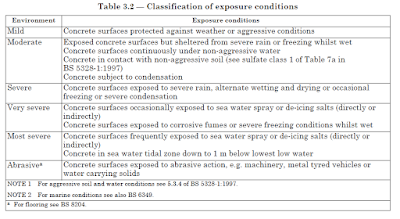Rebar coverage is defined in different ways by designers around the world. Some use this dimension as the distance between the surface of the concrete and the surface of the reinforcement. However, some use them differently. For example, let's consider a bar. When we talk about coverage, some mean the connection, others mean the main reinforcement.
However, it should cover any reinforcement. Whether it is connecting, main or transverse reinforcement, we must install the covering taking into account the exposure conditions and fire resistance.
Fire resistance is determined depending on the type of building and its needs. If there is a greater risk of fire, we may select a higher value. We also need to take into account the time required to evacuate the building.
Loading conditions take into account the environment in which the structure is built. If it is in water, frequently wet or otherwise exposed to the elements, this will be taken into account when deciding whether to cover the armor. BS 8110 defined these loading conditions and categorized them as light, medium, heavy, very heavy, more severe and abrasive. Once the loading conditions to which our structures will be subjected have been selected, the reinforcement coverage can be selected from Table 3.3 of BS 8110 Part 01.
In general, when selecting reinforcing covering, we consider exposure conditions and fire resistance. The highest reinforcement value resulting from both methods is selected as the reinforcement coverage.
For this purpose, reference is made to the following table.

